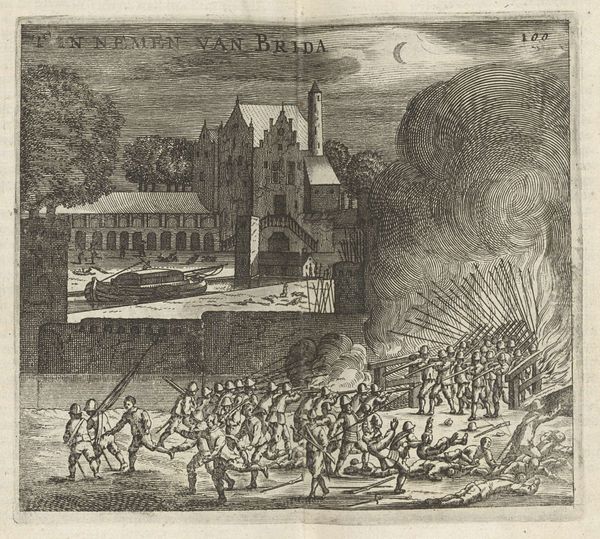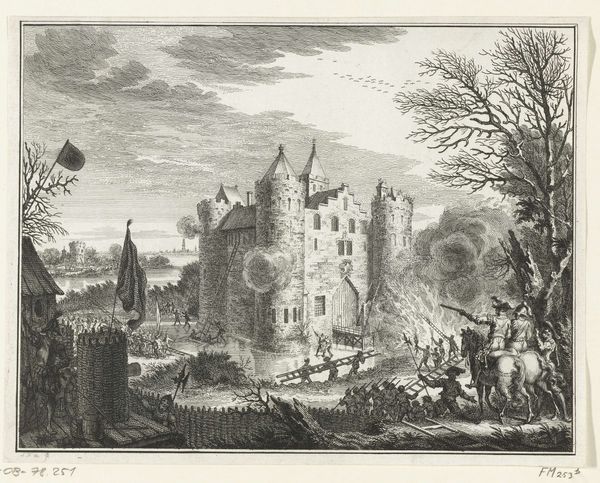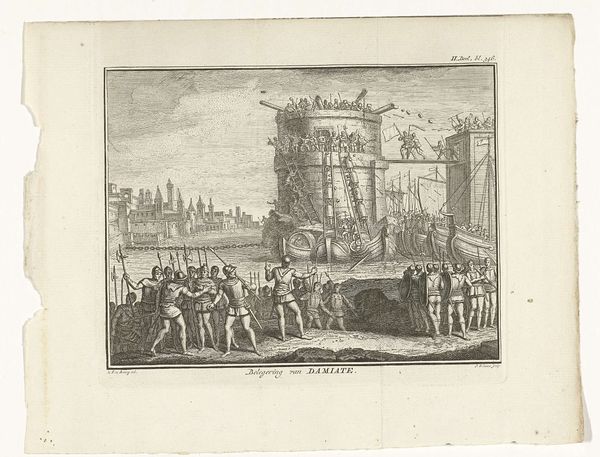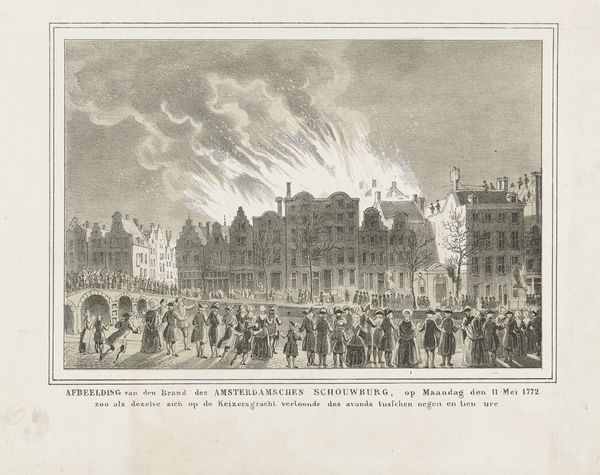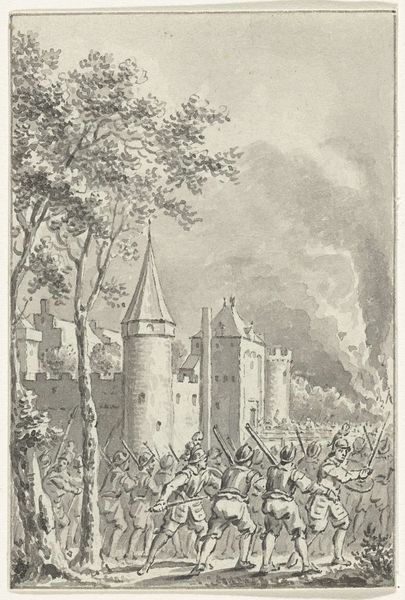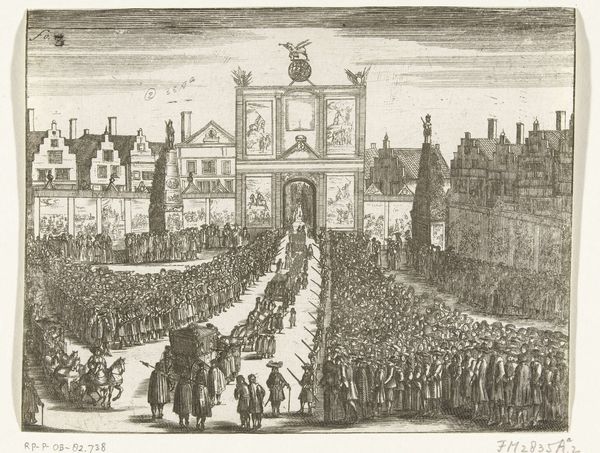
print, etching
#
pen drawing
# print
#
etching
#
landscape
#
etching
#
romanticism
#
cityscape
#
history-painting
#
realism
Dimensions: height 192 mm, width 246 mm
Copyright: Rijks Museum: Open Domain
Curator: This etching by Franciscus Mattheus Jozef Kierdorff depicts the fire in St. Bavo's Cathedral in Ghent, back in 1822. It's titled simply, "Brand in de Sint-Baafskathedraal te Gent, 1822". Editor: A chilling image. The cathedral looms, magnificent yet vulnerable, and that plume of smoke... it evokes such a powerful sense of loss and anxiety, wouldn’t you agree? Curator: Absolutely. Kierdorff has really captured the drama, the raw emotion of the event. Notice how he contrasts the solid, almost stoic architecture with the swirling chaos of the fire and smoke. The fire in itself represents an interruption to what once was: time, history and continuity disturbed by socio-political forces. Editor: And look at the crowds! The artist conveys a feeling of unity during a tumultuous time, don’t you think? It’s a bit staged as a representation, perhaps intended to calm public fears at a time where anything could happen given previous historical upheavals, but this speaks to Romanticism’s vision of community. Curator: I think there's a cultural anxiety present. Buildings are important because they become ingrained with personal, communal memories, especially churches that host significant life events like baptism and funerals, among others. When that continuity is disrupted, people grieve on an unconscious level. It has a real psychological effect. Editor: Yes, the social role of art is palpable here. This work seems to perform damage control. The almost journalistic rendering creates a record—and, importantly, a visual narrative that served a very specific function in that era, to reassure while informing. It is quite a balancing act. Curator: These buildings, churches especially, can be viewed as large containers for all of our projections and fears, too. I believe that the burning down of important sites can sometimes trigger collective and traumatic memories and anxieties of when things were also up in flames. Editor: Definitely a disruption, then. It highlights the transient nature of material culture while hinting at longer cultural arcs. Well, thanks for this tour; seeing how socio-political anxiety and faith are mirrored makes me think differently about architecture and iconography. Curator: And for me, it is amazing how an image can unlock the intersection of history, collective trauma, and artistic intention, adding to a tapestry of symbols of how we have collectively responded to it.
Comments
No comments
Be the first to comment and join the conversation on the ultimate creative platform.

